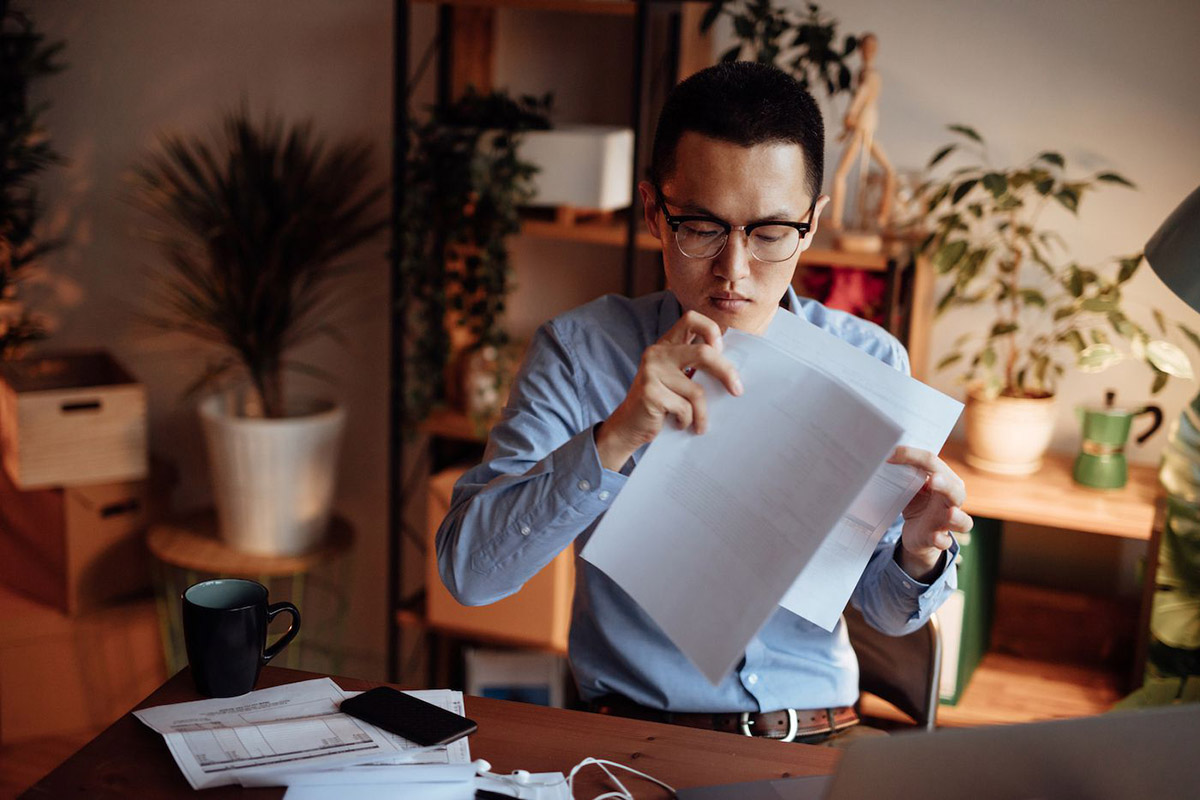

Finance
What Is Last Statement Balance On Discover
Published: March 2, 2024
Discover what last statement balance means and how it impacts your finances. Learn how to interpret and manage your last statement balance with ease.
(Many of the links in this article redirect to a specific reviewed product. Your purchase of these products through affiliate links helps to generate commission for LiveWell, at no extra cost. Learn more)
Table of Contents
Introduction
Understanding the Last Statement Balance on Discover
Understanding your credit card's last statement balance is crucial for managing your finances effectively. This balance represents the total amount you owe to the credit card company at the end of a billing cycle. It includes purchases, balance transfers, cash advances, fees, and interest charges incurred during that period. By comprehending the significance of the last statement balance, you can make informed decisions about your spending, budgeting, and debt repayment.
The last statement balance is a key component of your credit card account, as it reflects your outstanding financial obligations to the card issuer. It serves as a snapshot of your financial activity during the billing cycle, offering insights into your spending habits and overall credit utilization. Whether you are striving to maintain a healthy credit score, aiming to minimize interest expenses, or seeking to track your financial progress, the last statement balance plays a pivotal role in achieving these objectives.
By exploring the concept of the last statement balance in depth, you can gain a clearer understanding of its implications for your financial well-being. This article delves into the importance of the last statement balance, how to find it on your Discover credit card statement, and strategies for managing it effectively. Whether you are a seasoned credit card user or new to the world of personal finance, mastering the nuances of the last statement balance can empower you to make sound financial choices and maintain control over your economic future.
Understanding Last Statement Balance
When it comes to managing your credit card finances, understanding the concept of the last statement balance is essential. This balance represents the total amount you owed to the credit card company at the end of the previous billing cycle. It encompasses all the transactions and charges made on the card during that period, including purchases, balance transfers, cash advances, fees, and interest accrued.
It’s important to note that the last statement balance is not the same as the current balance, which reflects the total amount you currently owe on your credit card, considering any transactions or payments made after the last statement was issued. The last statement balance is essentially a snapshot of your financial obligations at a specific point in time, typically at the end of the billing cycle.
Understanding the components that contribute to the last statement balance can provide valuable insights into your spending patterns and financial habits. It allows you to track your credit utilization, assess your ability to manage debt, and identify any potential discrepancies or unauthorized charges on your account. Moreover, comprehending the last statement balance enables you to anticipate the minimum payment due and evaluate the impact of carrying a balance on your credit card’s interest charges.
For individuals aiming to improve their credit score, the last statement balance holds particular significance. It directly influences the credit utilization ratio, which is a key factor in determining creditworthiness. By keeping the last statement balance low relative to the credit limit, cardholders can positively impact their credit score and demonstrate responsible credit management to potential lenders.
Ultimately, grasping the intricacies of the last statement balance empowers cardholders to make informed financial decisions, effectively manage their credit card debt, and maintain control over their overall financial well-being. By monitoring this balance and its contributing factors, individuals can proactively address any issues, avoid unnecessary fees, and work towards achieving greater financial stability.
Importance of Last Statement Balance
The last statement balance on your Discover credit card holds significant importance in managing your financial health and creditworthiness. It serves as a pivotal indicator of your credit utilization, financial discipline, and overall debt management. Understanding the importance of the last statement balance can empower you to make informed decisions about your spending, repayment strategies, and long-term financial goals.
One of the key reasons why the last statement balance is crucial lies in its impact on your credit score. The credit utilization ratio, which compares the amount of credit you are using to your total available credit, is a fundamental factor in determining your creditworthiness. By keeping your last statement balance low relative to your credit limit, you can positively influence this ratio and potentially boost your credit score. This, in turn, can enhance your ability to qualify for favorable loan terms, secure competitive interest rates, and access a wider range of financial opportunities.
Moreover, the last statement balance directly influences the minimum payment due on your credit card. By understanding and managing this balance effectively, you can anticipate and meet your minimum payment obligations, thereby avoiding late fees and negative repercussions on your credit history. Additionally, maintaining a lower last statement balance can help mitigate the accumulation of high-interest charges, enabling you to save money and progress towards becoming debt-free.
For individuals seeking to monitor their financial progress and exercise prudent budgeting, the last statement balance serves as a valuable benchmark. It encapsulates your spending patterns, financial commitments, and the impact of interest charges, providing a comprehensive overview of your credit card account’s status at the end of each billing cycle. By analyzing this balance in conjunction with your other financial obligations, you can gain insights into areas for potential cost reductions, repayment prioritization, and long-term financial planning.
Ultimately, recognizing the importance of the last statement balance empowers you to take control of your financial journey. By proactively managing this balance, you can optimize your credit utilization, minimize interest expenses, and demonstrate responsible credit management. Whether you are striving to build a solid credit history, reduce debt burdens, or achieve greater financial stability, the last statement balance plays a pivotal role in realizing these objectives.
How to Find Last Statement Balance on Discover
Locating the last statement balance on your Discover credit card statement is a straightforward process that enables you to stay informed about your financial obligations and track your credit card activity effectively. Whether you prefer accessing your statements online or reviewing physical copies, Discover provides multiple avenues for cardholders to retrieve their last statement balance.
For individuals who opt for the convenience of online account management, accessing the last statement balance is just a few clicks away. Upon logging into your Discover account through the official website or mobile app, navigate to the “Statements & Activity” section. Here, you can view your most recent statement, which includes the last statement balance prominently displayed. Additionally, you have the option to access previous statements to track changes in your balance over time and identify any discrepancies or irregularities.
If you prefer receiving physical statements, the last statement balance is prominently featured on the printed or mailed statement sent to your registered address. You can review the statement at your convenience and locate the last statement balance along with other pertinent details, such as payment due date, minimum payment, and transaction summaries. By retaining physical copies of your statements, you can maintain a comprehensive record of your credit card activity and monitor changes in your balance from one billing cycle to the next.
Discover also offers the flexibility of receiving account alerts and notifications, including updates on your last statement balance. By customizing your alert preferences through the Discover website or mobile app, you can opt to receive timely notifications about your statement balance, payment due date, and transaction activity. This proactive approach enables you to stay informed about changes in your balance and take prompt action to address any concerns or discrepancies.
Regardless of your preferred method for accessing your Discover credit card statements, staying attuned to your last statement balance is essential for maintaining financial awareness and managing your credit card obligations effectively. By leveraging the convenience and accessibility of Discover’s account management tools, you can proactively monitor your last statement balance, track your financial progress, and make informed decisions about your spending and repayment strategies.
Managing Last Statement Balance
Effectively managing your last statement balance on your Discover credit card is instrumental in maintaining financial stability and optimizing your credit card usage. By implementing strategic practices and staying mindful of your spending and repayment habits, you can exert greater control over your last statement balance and work towards achieving a healthier financial outlook.
One of the fundamental strategies for managing your last statement balance revolves around responsible spending. By conscientiously monitoring your credit card transactions and adhering to a budget, you can mitigate the accumulation of excessive charges and maintain a manageable last statement balance. Prioritizing essential purchases and evaluating discretionary expenses can help you exercise prudent financial decision-making and prevent unnecessary burdens on your credit card account.
Moreover, making timely payments is pivotal in managing your last statement balance effectively. By ensuring that you meet at least the minimum payment due by the specified deadline, you can avoid late fees and potential negative impacts on your credit history. Additionally, striving to pay more than the minimum amount can expedite the reduction of your last statement balance, curbing the accrual of interest and fostering a proactive approach to debt management.
Regularly monitoring your credit card statements and staying vigilant for any unauthorized charges or billing errors is another crucial aspect of managing your last statement balance. By promptly addressing discrepancies or disputing erroneous transactions, you can safeguard your financial integrity and prevent inaccuracies from inflating your last statement balance. Utilizing Discover’s online account management tools and transaction alerts can enhance your ability to stay informed about changes in your balance and swiftly address any concerns.
Furthermore, leveraging the benefits of Discover’s rewards programs and promotional offers can contribute to managing your last statement balance effectively. By maximizing cashback rewards, redeeming statement credits, or taking advantage of promotional interest rates, you can offset expenses and reduce your last statement balance, thereby fostering greater financial efficiency and maximizing the value of your credit card usage.
Ultimately, proactively managing your last statement balance empowers you to navigate your credit card finances with confidence and prudence. By implementing these strategies and maintaining a proactive stance towards your financial well-being, you can optimize your credit card usage, minimize interest expenses, and work towards achieving a healthier financial standing.
Conclusion
In conclusion, the last statement balance on your Discover credit card holds substantial significance in shaping your financial journey and credit card management practices. By comprehending the implications of this balance, accessing it conveniently, and proactively managing it, you can exercise greater control over your credit card finances and work towards achieving long-term financial stability.
Understanding the last statement balance empowers you to make informed decisions about your spending, debt repayment, and credit utilization, ultimately contributing to the enhancement of your financial well-being. By recognizing the impact of this balance on your credit score, minimum payment obligations, and overall debt management, you can navigate your credit card usage with prudence and foresight.
Discover’s user-friendly account management tools and statement accessibility options enable you to retrieve your last statement balance effortlessly, whether through online platforms, physical statements, or customized alerts. This accessibility facilitates proactive monitoring of your balance, ensuring that you remain attuned to changes and can address any concerns promptly.
Moreover, by implementing strategic practices such as responsible spending, timely payments, vigilant statement monitoring, and leveraging rewards programs, you can effectively manage your last statement balance and optimize your credit card usage. These proactive measures enable you to mitigate interest expenses, minimize financial burdens, and work towards achieving greater financial efficiency.
Ultimately, mastering the management of your last statement balance on your Discover credit card equips you with the tools and knowledge to navigate your credit card finances with confidence and prudence. By staying informed, proactive, and strategic in your approach, you can harness the benefits of your credit card while maintaining control over your financial well-being.
Embracing the significance of the last statement balance and integrating it into your financial management practices can pave the way for a more secure and empowered financial future, where your credit card serves as a valuable tool for achieving your financial goals.














